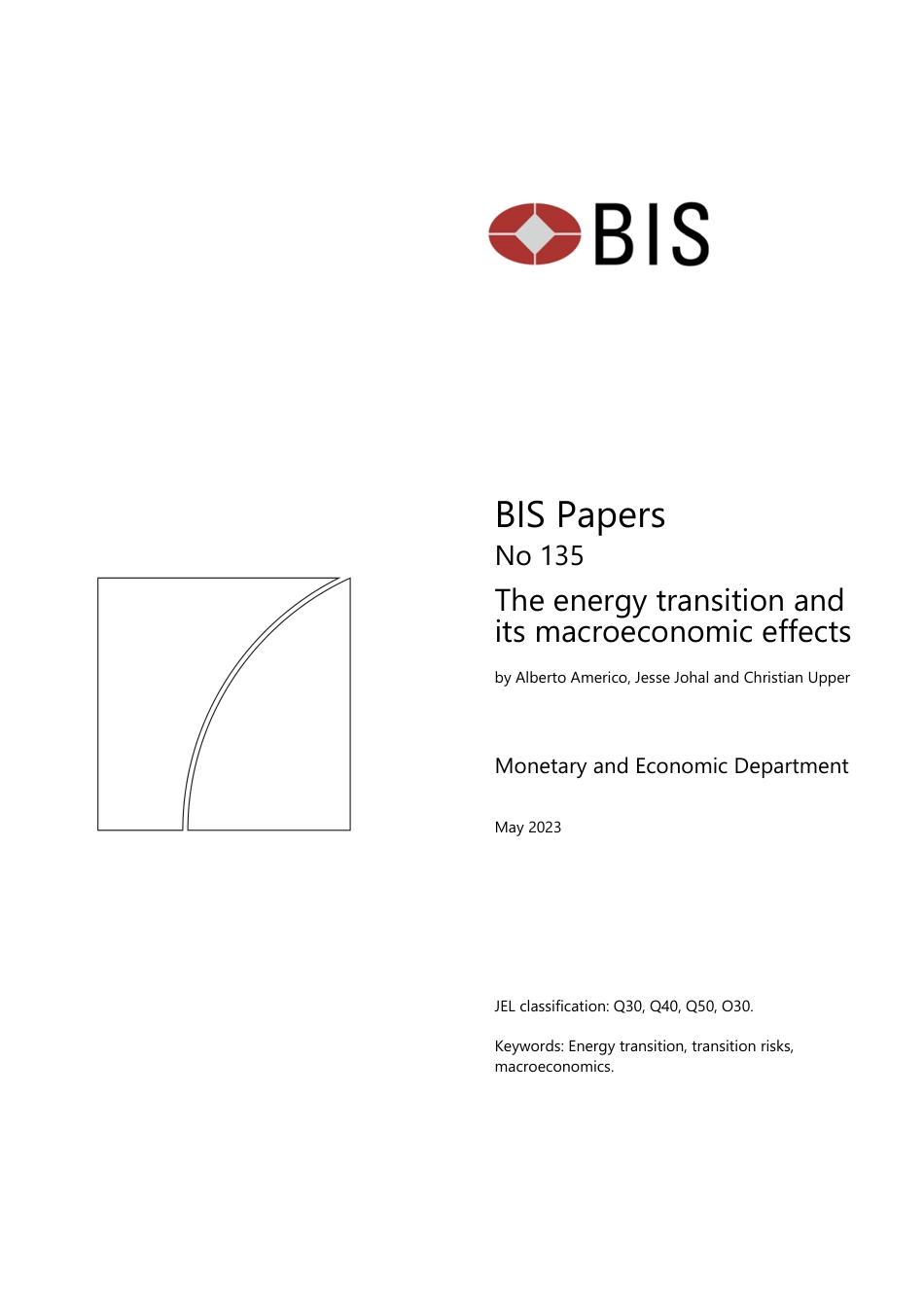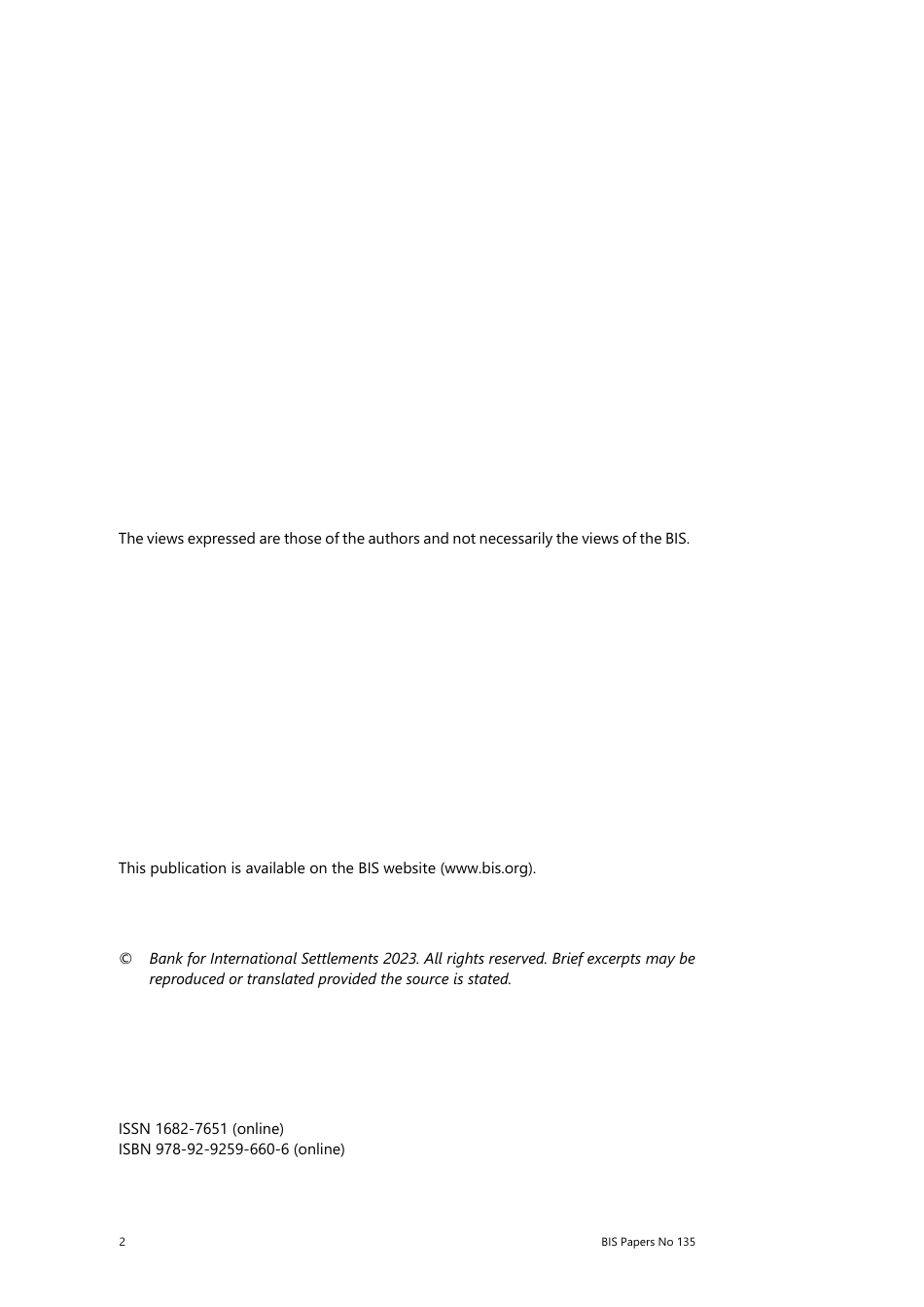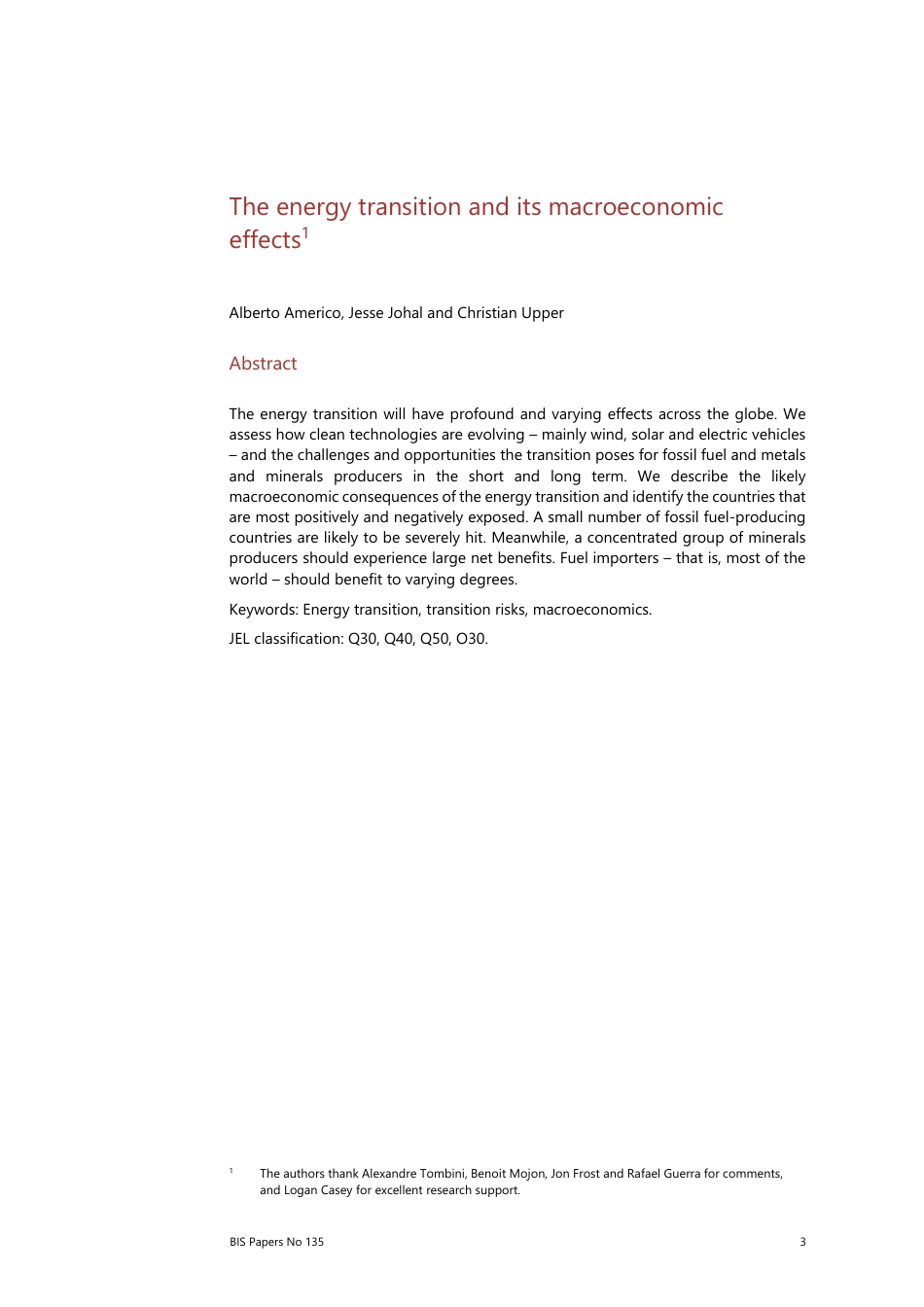BIS Papers No 135 The energy transition and its macroeconomic effects by Alberto Americo, Jesse Johal and Christian Upper Monetary and Economic Department May 2023 JEL classification: Q30, Q40, Q50, O30. Keywords: Energy transition, transition risks, macroeconomics. 2 BIS Papers No 135 The views expressed are those of the authors and not necessarily the views of the BIS. This publication is available on the BIS website (www.bis.org). © Bank for International Settlements 2023. All rights reserved. Brief excerpts may be reproduced or translated provided the source is stated. ISSN 1682-7651 (online) ISBN 978-92-9259-660-6 (online) BIS Papers No 135 3 The energy transition and its macroeconomic effects1 Alberto Americo, Jesse Johal and Christian Upper Abstract The energy transition will have profound and varying effects across the globe. We assess how clean technologies are evolving – mainly wind, solar and electric vehicles – and the challenges and opportunities the transition poses for fossil fuel and metalsand minerals producers in the short and long term. We describe the likelymacroeconomic consequences of the energy transition and identify the countries thatare most positively and negatively exposed. A small number of fossil fuel-producingcountries are likely to be severely hit. Meanwhile, a concentrated group of mineralsproducers should experience large net benefits. Fuel importers – that is, most of theworld – should benefit to varying degrees.Keywords: Energy transition, transition risks, macroeconomics. JEL classification: Q30, Q40, Q50, O30. 1The authors thank Alexandre Tombini, Benoit Mojon, Jon Frost and Rafael Guerra for comments, and Logan Casey for excellent research support. 4 BIS Papers No 135 1...



